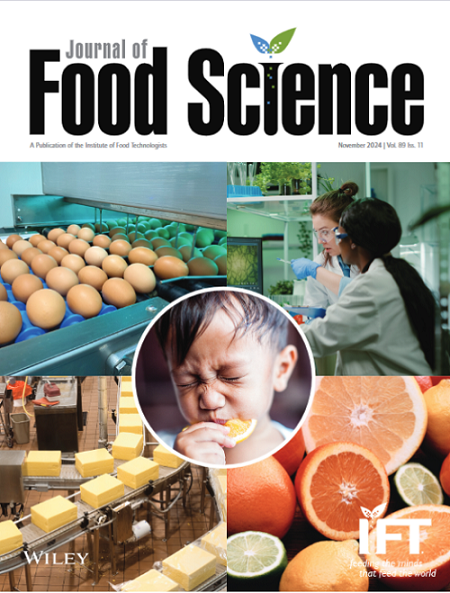Characterization of pecan, hickory, and walnut phospholipids and the comparable effects of pecan phospholipids with soy phospholipids on scopolamine-induced dementia in mice
Abstract
Nuts are famous and popular for their ability to nourish the brain. The effects of nuts differ depending on their phospholipid compositions, but unfortunately, studies on phospholipids in nuts are lacking. Therefore, the phospholipid compositions of pecan, hickory, and walnut, which are all from the Juglandaceae family, were analyzed and compared for the first time in this study. A total of 91 phospholipids from 10 classes were identified, while phosphatidylcholine (PC), phosphatidylethanolamine (PE), and phosphatidic acid are the major classes of phospholipids in these nuts. The substituted fatty acid chains were mainly polyunsaturated fatty acids, followed by saturated fatty acids and monounsaturated fatty acids in PCs, PEs, and all the phospholipids in the three types of nuts. Given that pecans have the highest total phospholipid content, PC content, PE content, and phosphatidylserine (PS) content of among the three nuts, and considering that PC, PE, and PS have been reported to enhance memory, pecans were chosen for further pharmacological analysis. Relatively high-purity (56.1%) pecan phospholipid extract (51.6 g) was obtained from pecan kernels (70 kg) to obtain more accurate biological activity results. The biological activity of pecan phospholipids was evaluated by behavioral tests, including the step-through test, the step-down test, and the Morris water maze test. A total of 210 mice were divided into seven groups and intragastrically administered pecan phospholipids (120, 60, and 30 mg kg−1), while soy phospholipids (400 and 200 mg kg−1) were used as positive controls. The results indicated that pecan phospholipids possess learning- and memory-enhancing abilities comparable to those of soy phospholipids.
Practical Application
The phospholipid compositions of pecan, hickory, and walnut were analyzed and compared for the first time in this study, providing guidance for the future utilization of the valuable oils from these nuts. The findings of this study lay the groundwork for the future utilization of phospholipids from these types of nuts.

 求助内容:
求助内容: 应助结果提醒方式:
应助结果提醒方式:


